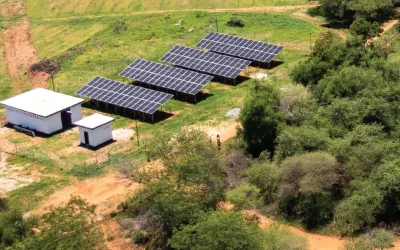Zim economic growth, can it surpass 2022 target?
Zimbabwe’s economy grew by 6,5 percent last year, but experts are cautiously optimistic of surpassing the 3,8 percent target for 2023, as the year so far has had its fair share of challenges.
The first half of the year was largely characterised by severe power cuts, inflation and exchange rate volatility.
This has since stabilised in the latter part of June, but the election risk still lingers above the economy due to their perceived disruptive nature, which can change an economy.
According to the preliminary Zimbabwe National Statistics Agency (ZimStat) report, the 6.5 percent increase in gross domestic product (GDP) growth last year surpassed the projected 5.5 percent growth rate due to growth in key sectors such as agriculture, mining, manufacturing, wholesale and retail, finance and insurance.
GDP increased to $225.99 billion in 2022, up from $212.1 billion in the prior year and the growth was underpinned by favourable external factors such as normal-to-above-normal rainfall patterns, a subdued Covid-19 pandemic, relatively stable exchange rates, declining inflation and favourable international mineral prices.
However, IH Securities, in its monthly equity research for June 2023, said the country is likely going to miss its GDP growth rate target of 3.8 percent in 2023 given that it has faced power shortages, inflation and depreciation of the local currency.
“According to the 2023 National Budget Statement, an inflation shock would result in the country’s economy increasing by only 1.1 percent.
“Inflation has generally been on an upward trend since the beginning of the year. Blended month-on-month inflation jumped from 0.7 percent in January 2023 to 74.5 percent in June, suggesting an increasing cost of living,” it said.
During the month of June, the parallel market rate increased by 111 percent and year to date, it has inched up by 700 percent.
“The rapid devaluation caused net buying on the market as both traditional and non-traditional investors looked to hedge Zimdollar; this has since stabilised in the latter part of June,” IH said.
Economist, Victor Bhoroma, said the growth will be way below 3.8 percent due to the impending risk associated with upcoming elections, political violence and the persistent cycle of disputes.
“This tends to affect both domestic and foreign investment. Similarly, the impact of inflation has negatively impacted consumption and business incomes,” he said.
According to the Zimstat report, the manufacturing industry recorded a 5.9 percent growth rate, with the food, beverage, and tobacco sub-sector being the largest contributor to the growth.
The wholesale and retail trade sector recorded a 7.2 percent growth rate, with the largest contributor being the food, beverages and tobacco sub-sector.
Economist, Dr Prosper Chitambara, said 2023 has been a challenging year both in terms of electricity supply during the first half of the year and instability.
However, it is possible to achieve at least 4 percent this year due to improvements in power supply and the reforms on the forex exchange rate, which will slowly bring some confidence.
“Instability weighed down on growth; the economy has dissected, with non-traditional economic drivers such as wholesale and retail dominating in terms of GDP, moving away from agriculture, manufacturing and other productive sectors,” he said.
He said there is a need for the government to incentivise sectors that add value, such as agriculture and manufacturing, because those are the sectors underpinning sustainable growth for the economy.
“Agriculture is closely linked to manufacturing; if it does well, manufacturing also does well, which translates to the rest of the economy,” said Dr. Chitambara.
Dr. Chitambara noted that according to Zimstat, the rate of informalisation increased from 76 percent to 90 percent despite government formalisation policy, and this largely speaks to the difficult macro-economic environment.
Investment analyst Rufaro Hozheri, said the GDP growth rate of 6.5 percent was above the 5.5 percent that was projected by the Ministry of Finance and Economic Development in the 2023 national budget at constant prices after adjusting for inflation.
“This is a positive sign and speaks to the growth in the economy spearheaded by sectors like agriculture, mining and tourism.However, it is possible that there could be distortions in estimating these numbers, especially in terms of accounting for inflation.
“Overall, I expect the growth trajectory to continue in 2023, but at a lower rate, mainly because of the hesitant nature of business in an election year and also the fact that we have recovered from Covid-19, so the low base effects could be over,” he said.
Eddie Cross, an economist, said the economy will be well above 3 percent in 2023, underpinned by sustaining the current stability.-ebusinessweekly







